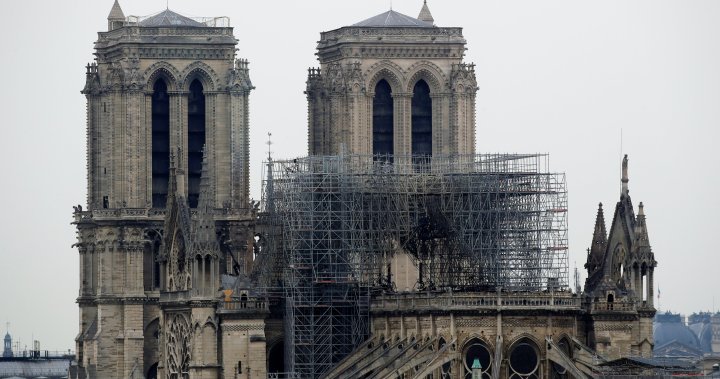A pivotal moment in the restoration of Paris’ Notre Dame Cathedral is set for Saturday, with the installation of a golden rooster atop its spire.
It marks a key step in the monument’s revival after the devastating April 2019 fire. Designed by chief architect Philippe Villeneuve, this new rooster will replace the original that was damaged beyond repair in the blaze.
The rooster, a French emblem of vigilance and Christ’s resurrection, will house sacred relics inside it. These include fragments of Christ’s Crown of Thorns and remains of St. Denis and St. Genevieve, infusing the sculpture with religious importance. The Crown of Thorns, regarded as Notre Dame’s most sacred relic, was among the treasures quickly removed after the fire broke out. Brought to Paris by King Louis IX in the 13th century, it is purported to have been pressed onto Christ’s head during the crucifixion.
Before ascending to its perch, the rooster will be blessed by Paris Archbishop Laurent Ulrich. A sealed tube within the sculpture will list the names of nearly 2,000 individuals who contributed to the cathedral’s reconstruction, underscoring the collective effort behind the works.
The rooster which plunged to the ground during the fire Notre Dame cathedral is displayed at the Culture Ministry in Paris, Friday, Sept. 20, 2019. The rooster, long a symbol of France, tumbled to the ground in the April blaze that consumed the cathedral’s roof and collapsed its spire. The bird somehow survived, and is going on public display this weekend.
AP Photo/Michel Euler
French President Emmanuel Macron, who last week visited the site to mark a one-year countdown to its re-opening, announced that the original rooster will be displayed in a new museum at the Hotel-Dieu. This move, along with plans to invite Pope Francis for the cathedral’s reopening next year, highlights Notre Dame’s significance in French history and culture.
The rooster’s installation, crowning a spire reconstructed from Eugene Viollet-le-Duc’s 19th-century design, is a poignant reminder of its medieval origins as a symbol of hope and faith. Its longstanding association with the French nation since the Renaissance further adds to its historical and cultural significance, marking a new chapter of renewal and hope for Notre Dame and the French people.

© 2023 The Canadian Press




